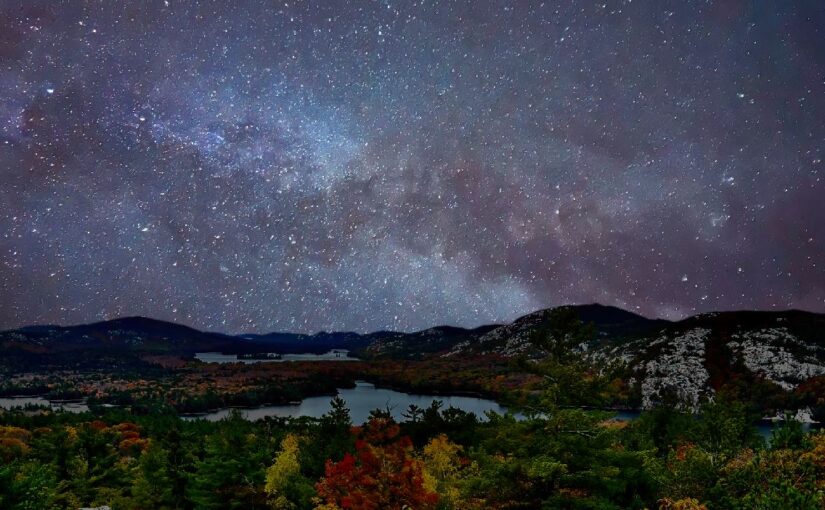Stars over Killarney is an annual festival celebrated at Killarney Provincial Park. The event’s 2023 theme — Colours in the Cosmos — was inspired by the parallels between the beauty and the colour in provincial parks and the beauty and colour of the skies above.
And beautiful colour was found everywhere at this year’s event!
The program took a very hands-on approach, so what was being presented could easily be seen and captured by paintbrush or smartphone.
For instance, the opening image of this article is a collage of two smartphone images without any special apps, showing the true power that in everyone’s hands and what’s possible in parks.
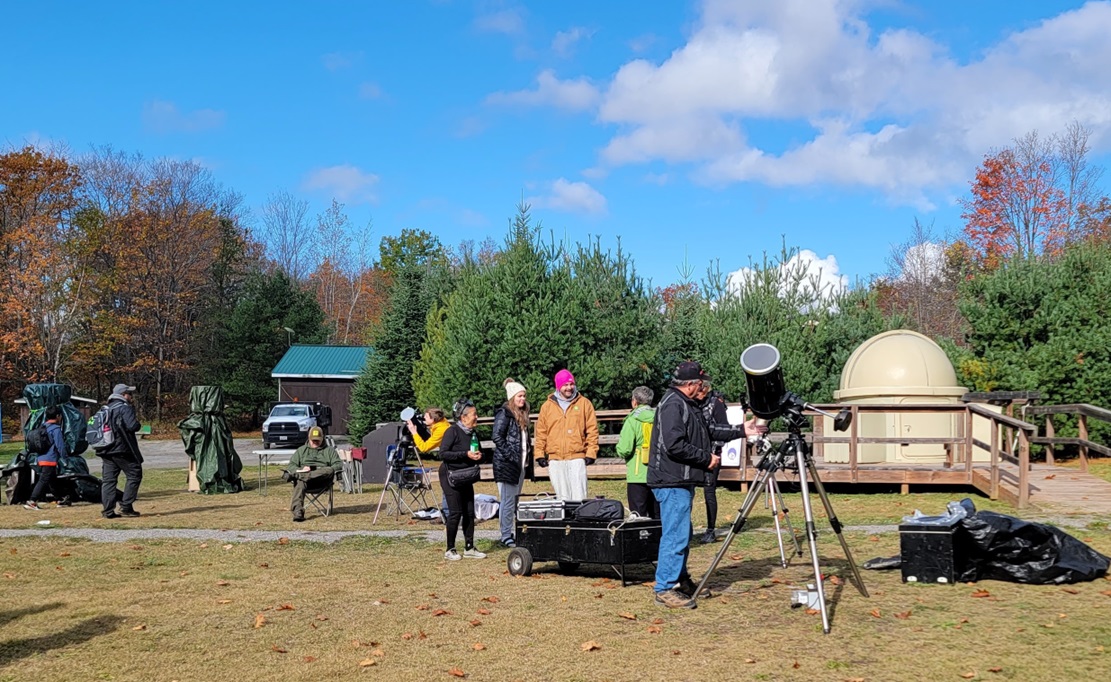
Friday was arrival and setup day for many volunteers from the North Bay Astronomy Club and the Sudbury Centre of the Royal Astronomical Society of Canada.
These volunteers provided countless hours of knowledge and expertise on observing and understanding the objects in the night sky. They are also considered to be amongst the best amateur telescope-makers in the world.
They’ve played played an important role in the success of Stars over Killarney since it premiered in 2018.
The evening’s observing was kicked off by Ojibwe Knowledge Carrier and professor of Indigenous Studies Will Morin, who welcomed everyone with a traditional teaching of the song Biindigen (been-dih-gen), a welcoming song.
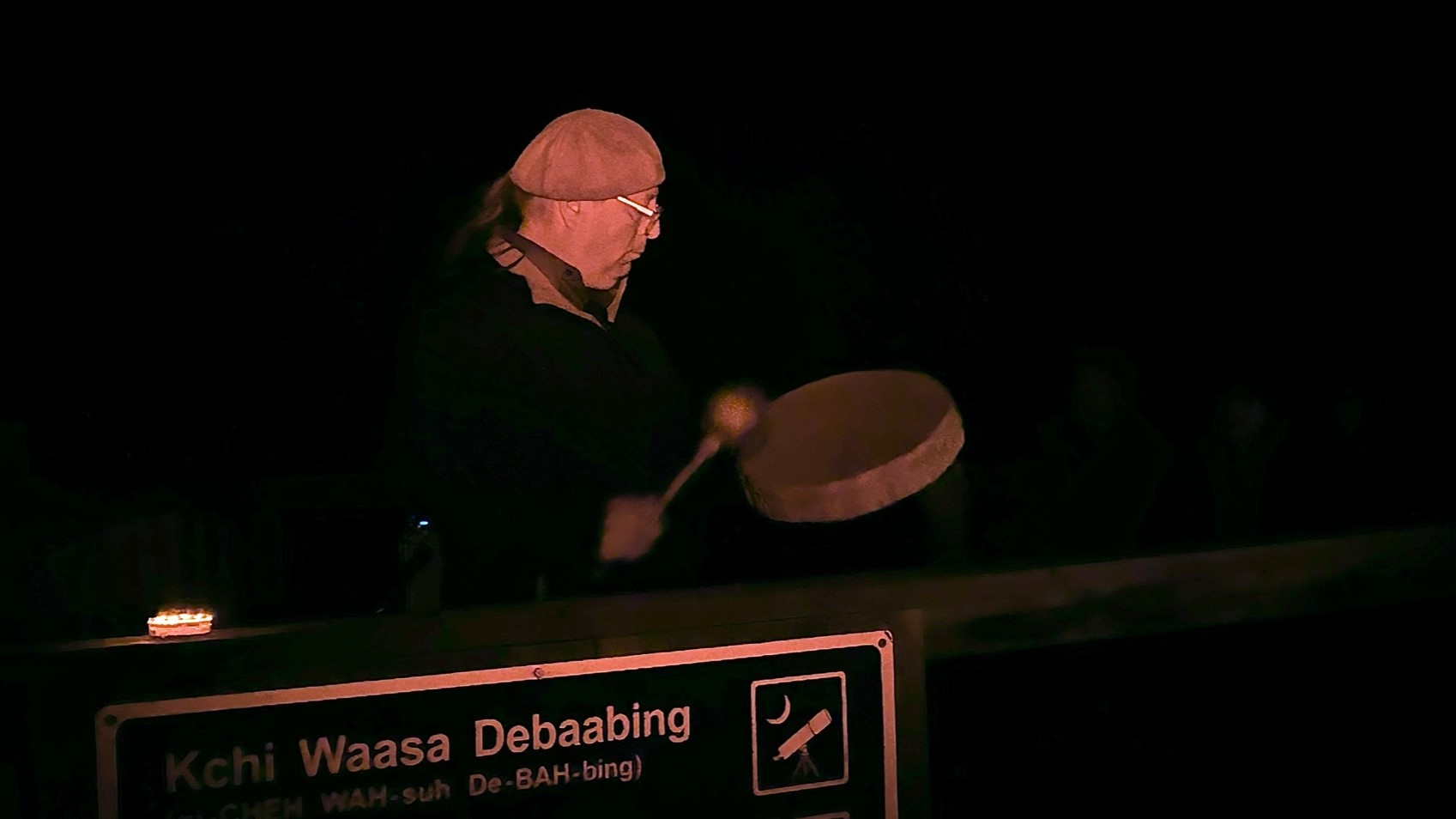
To learn more about this song, click here.
A full day of creativity
Saturday morning, Head Park Interpreter Kathleen Houlahan Chayer and Superintendent Jeremy Pawson introduced the event and shared the many amazing activities planned.
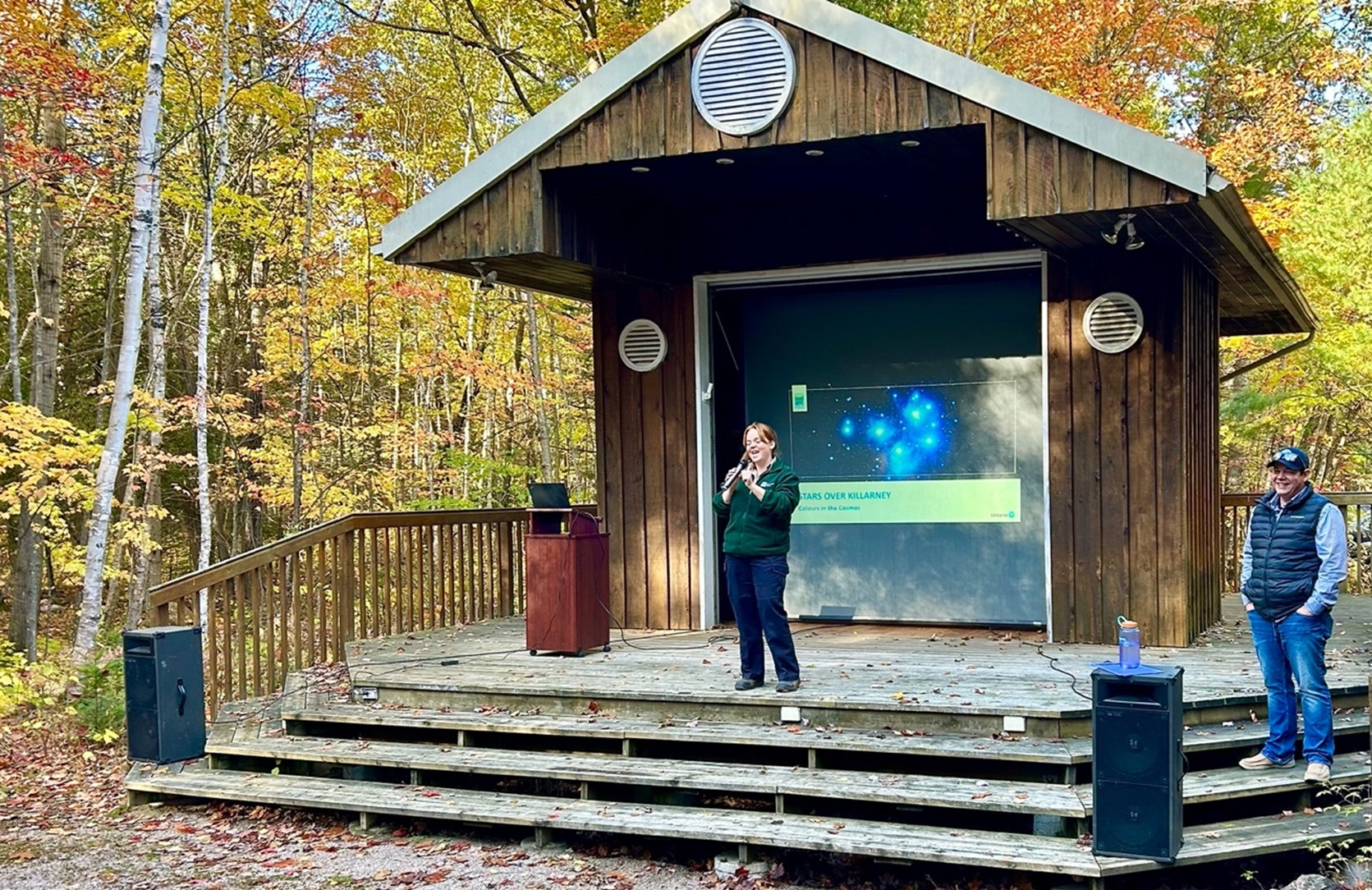
Kathleen pointed to the incredible historical connection between Killarney Provincial Park and Group of Seven artists A. Y. Jackson, Franklin Carmichael and A.J. Casson.
They not only captured the park’s splendours on canvas, but also rallied the Ontario Society of Artists (abbreviated to OSA , the organization lends its name to one of the park’s most beautiful lakes) to petition the government to protect the land.
Kathleen and Jeremy then turned it over to our first featured speaker, world-renowned painter and paint creator Anong Migwans Beam.
Capturing colour from nature
Anong provided visitors with a fascinating discussion ranging from her history and involvement in Indigenous painting (she is the daughter of Carl and Ann Beam) to her creation of paints from natural materials, in her case: minerals.
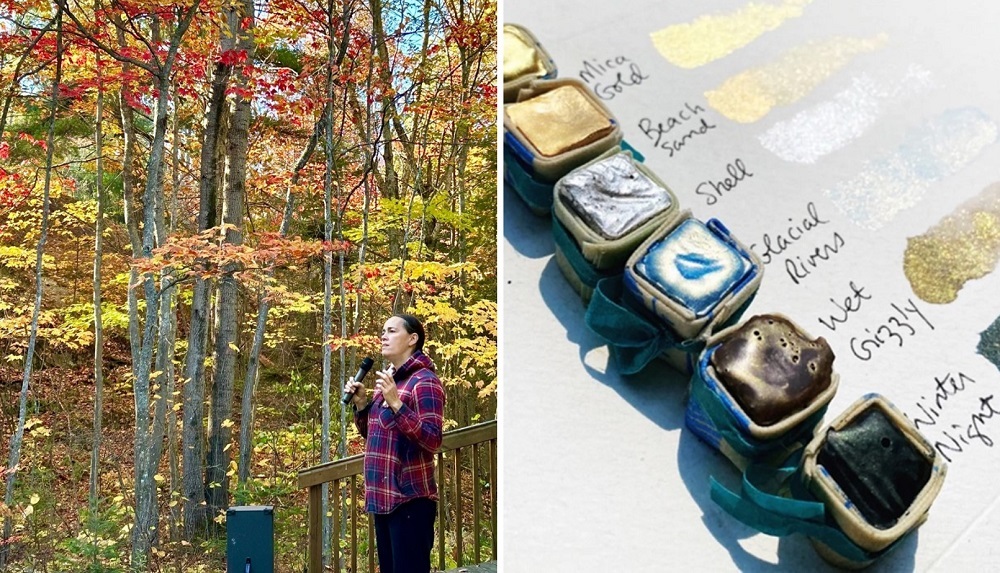
Her depth and breadth of knowledge was amazing. The audience learned a great deal about the history of paint-making and what inspires artists such as herself to use natural paints.
After lunch, safe eclipse-viewing glasses were handed out to interested people and many people were able to see the moon cross the sun’s surface as part of an eclipse.
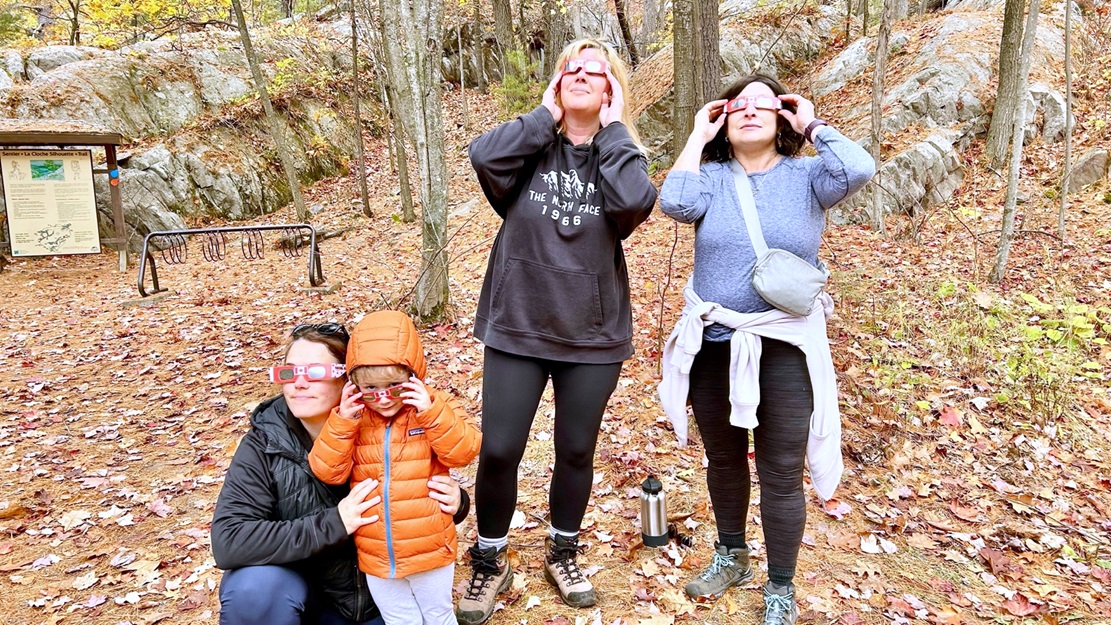
Unfortunately, Ontarians could only see a small portion of the eclipse, but it was still a great opportunity to prepare for the great eclipse on April 8, 2024!
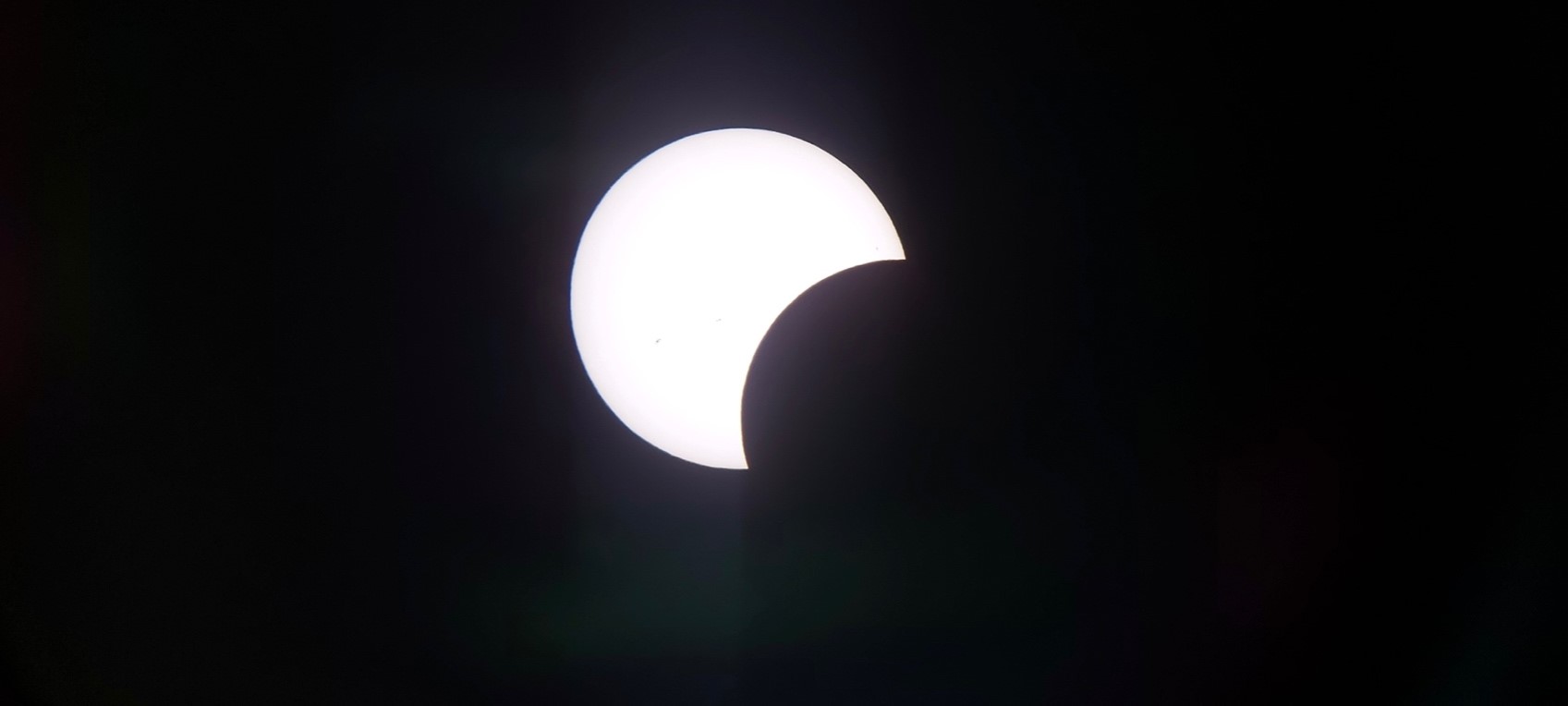
Then it was off to one of three drop-in workshops: Stitch the Stars, Capturing Killarney Colours on Canvas, and Capturing Killarney with Pixels.
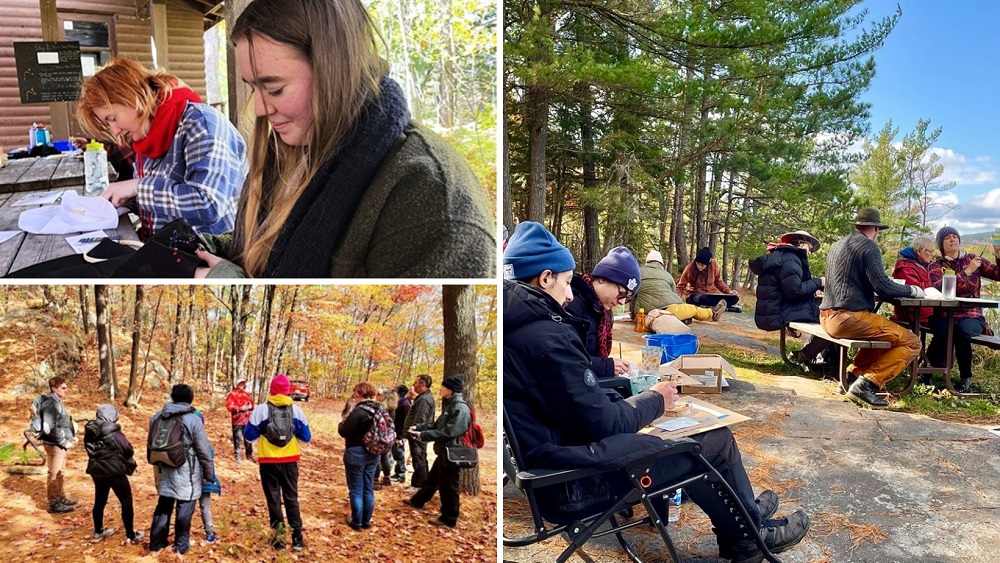
These three workshops were extremely well-received with participants going to different locations to engage in creative and artistic activities from embroidery (top left), to smartphone skills (bottom left), to painting with watercolours (right).
Capturing colour from the stars
The evening presentation featured Nico Carver discussing his history of astrophotography, including spectacular video and images of aurora borealis and nebulae.
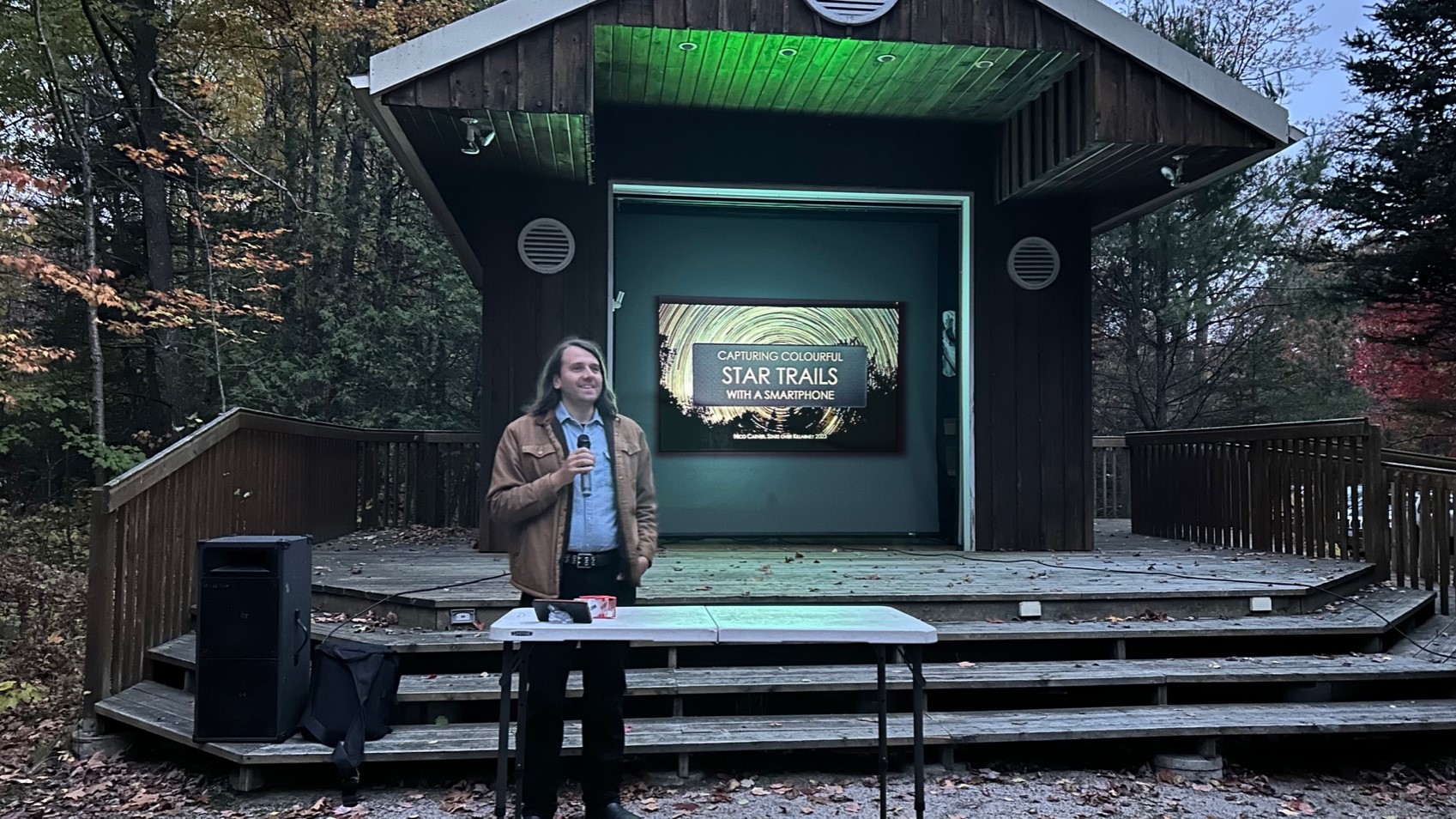
He proceeded to teach visitors how to use a smartphone to capture the colours in the night sky by stacking hundreds of individual images together.
By using this method, starlight, which normally appears as tiny points of light, extends out over a long distance and displays incredible colour. That way, everyone can capture the colours in the cosmos.
Click play to see an example of star trails captured at Killarney!
The above was produced using Nico’s technique and centred towards the south on the constellations of Orion the Hunter and Taurus the Bull.
The star trails are growing from left to right (east to west) because Earth is rotating from right to left (west to east), thus blurring the stars into these beautifully extended and colourful streaks!
Didn’t attend this program? Watch these videos (iPhone and Android) to give you guidance on capturing star trails!
Public observing at the observing field
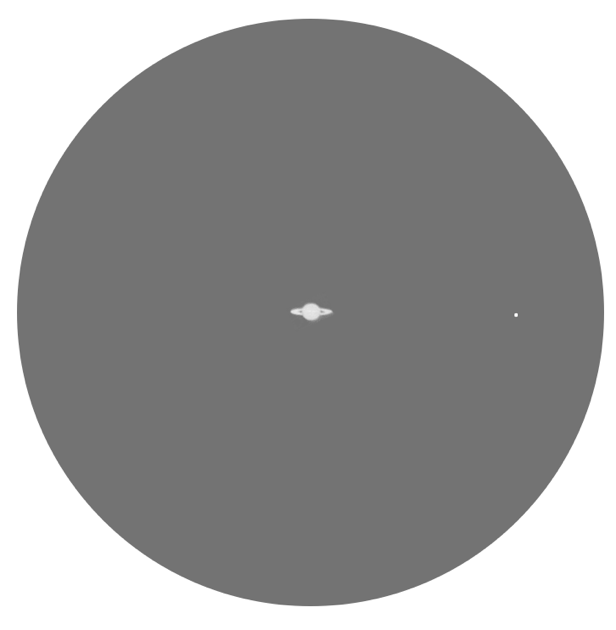
While there was about half an hour of clear skies after the evening presentation, the clouds quickly came in.
However, because many of the astronomers had already located Saturn, the public was able to get a glimpse of the planet and its largest moon Titan (to the right of Saturn in the generated image below), even though they could not see it with their eyes.
Discovery staff, volunteers from the Sudbury Centre of the Royal Astronomical Society of Canada and the North Bay Astronomy Club, and the astronomer in residence were able to explain telescopes, planets, and some of the amazing objects in our universe using tables and smartphones from photos previously obtained through the telescopes out on display.
The final day: the science of colour
Those who registered were treated to an amazing opportunity which was to paint the Milky Way and other stars using Anong Beam paints.
This workshop was an amazing opportunity to put into practice the techniques learned over the course of the event and to come away with an amazing painting capturing the cosmos in colour.
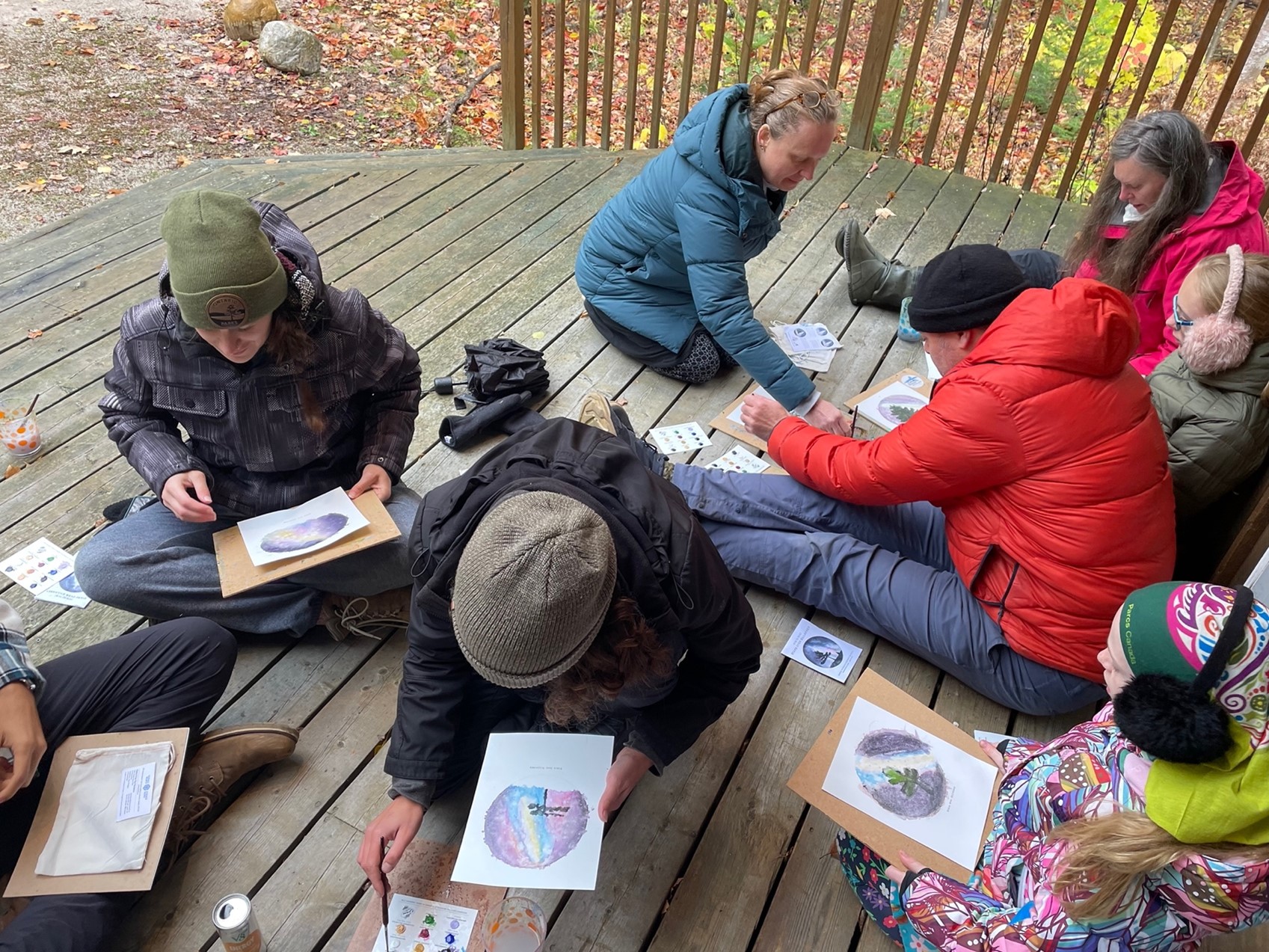
The final event was held at Science North, hosted by Dr. Olathe MacIntyre. Her hands–on program was geared for participants of all ages and demonstrated how nebulae emit colour, as well as the art and science of false colour images of the cosmos.
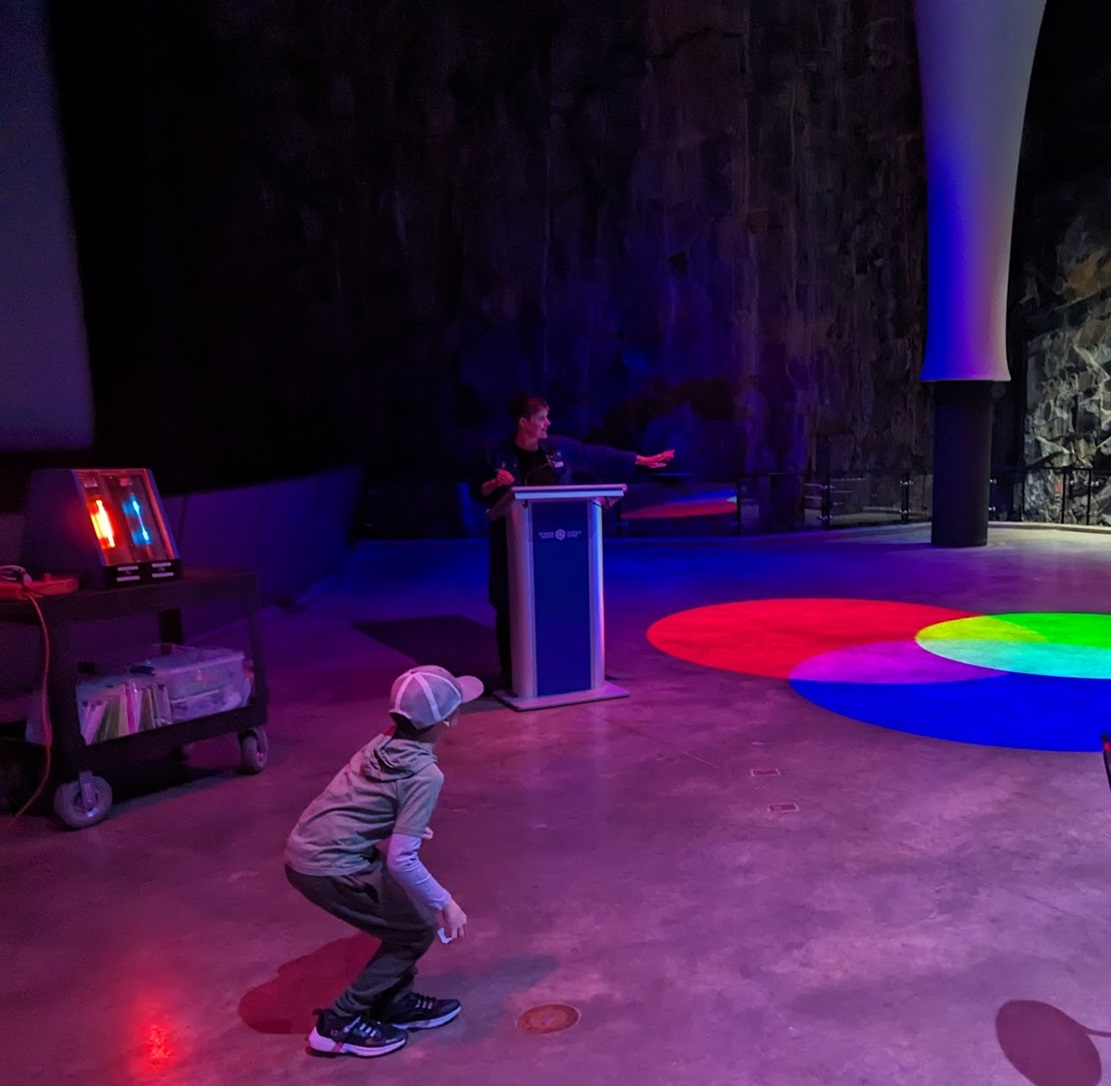
It was a fun and exciting opportunity to explore the colours of light!
Participants learned how atoms are identified in distant objects. They even made identifications of their own using spectroscopes and diffraction glasses to see the spectrums emitted by gases such as neon and mercury.
Participants also experimented with the energy in different colours of light and how light mixes to create all the colours of the cosmos.
Thanks to the amazing volunteers and all who attended!
Make sure to check back for Stars Over Killarney 2024 updates.
